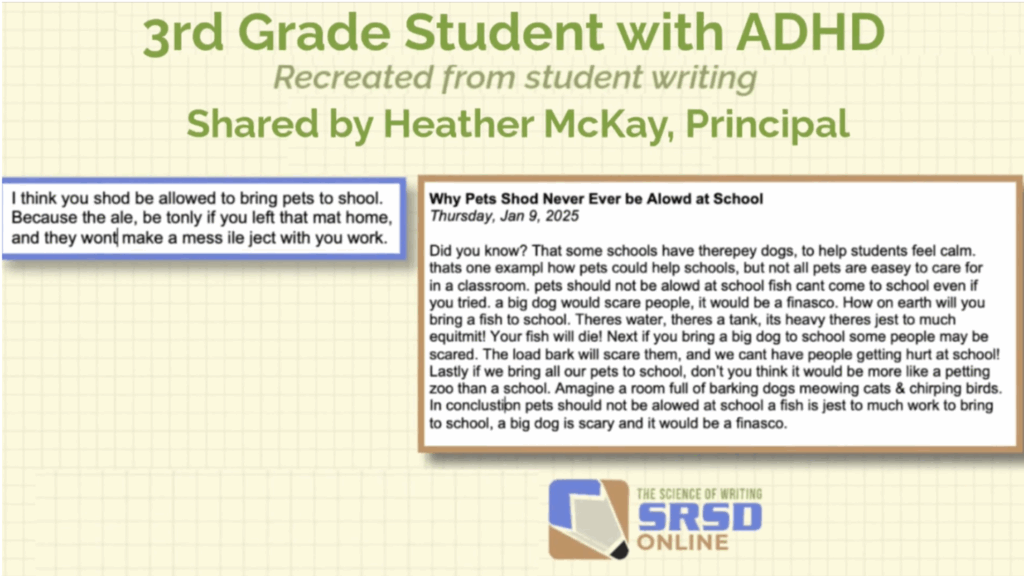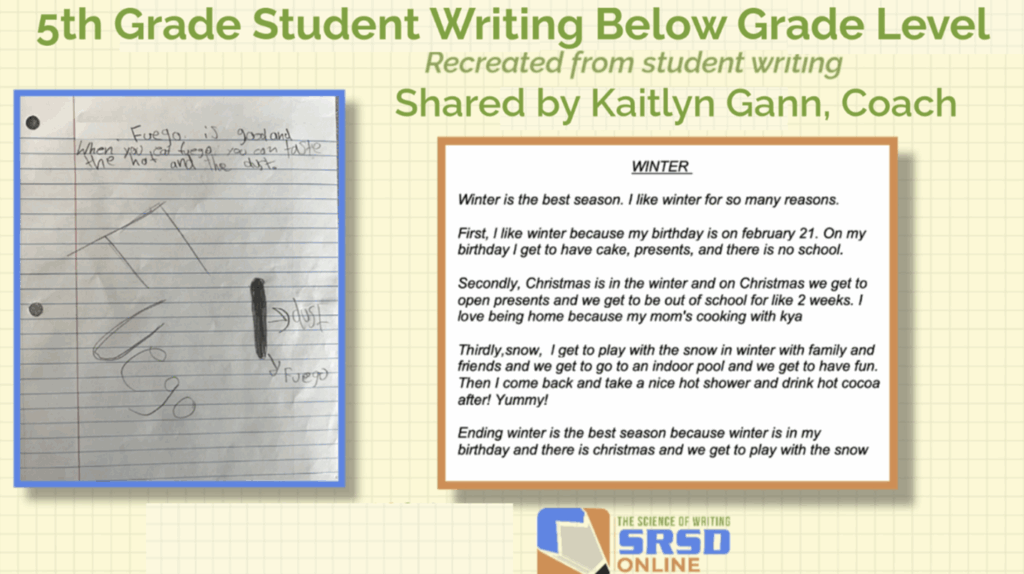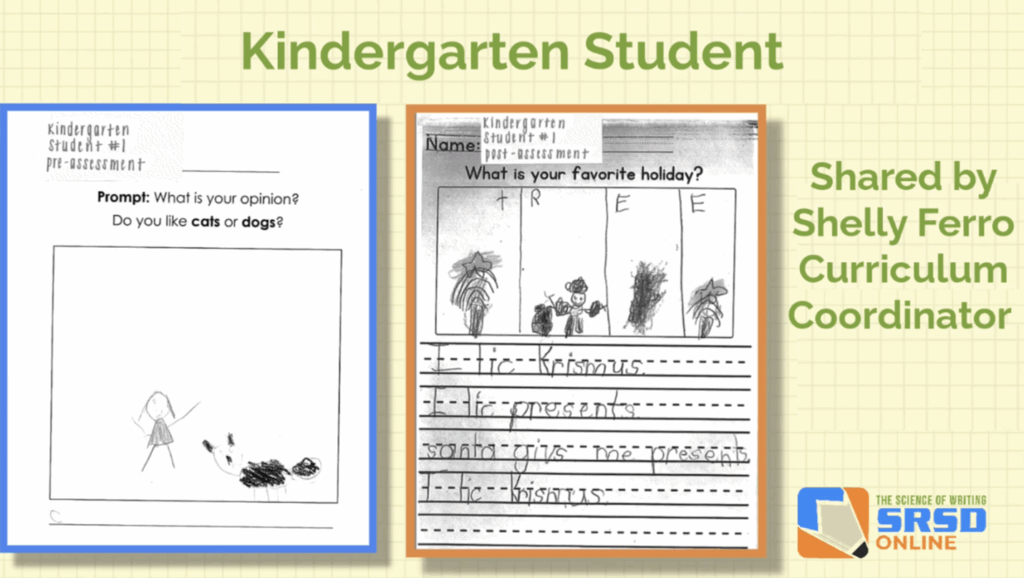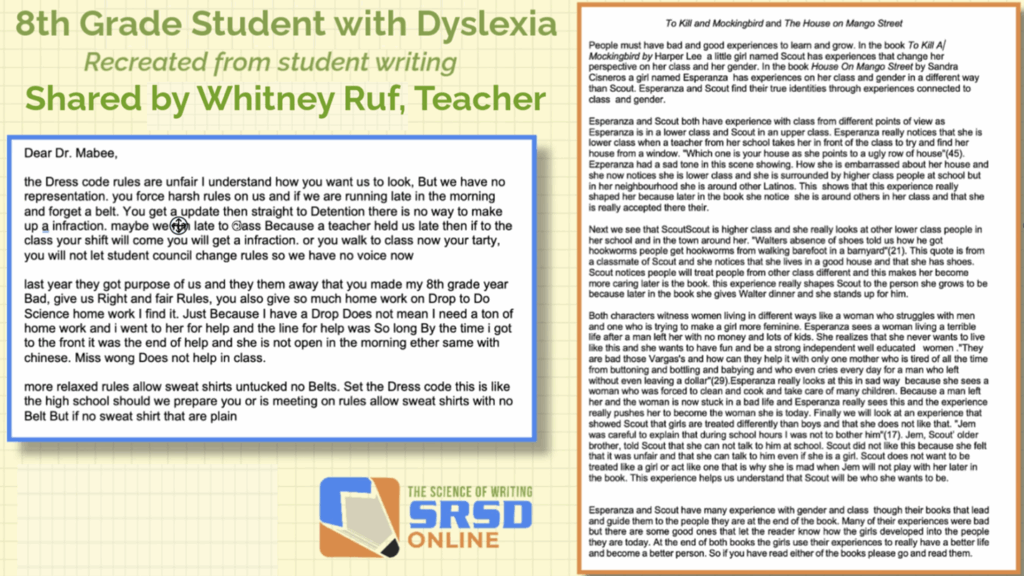What Is SRSD? The Writing Framework Educators Can’t Stop Talking About

Welcome to a deep dive into a framework that’s quietly transforming writing instruction in classrooms across the globe: Self-Regulated Strategy Development, or SRSD.
Suppose you’re a teacher, administrator, curriculum leader, or simply someone who cares about how students learn to write. In that case, this post is your fast track to understanding what makes self-regulated strategy development (SRSD) so powerful—and so different. Backed by more than 40 years of rigorous research, SRSD is not a prepackaged writing curriculum. It’s not a trendy set of writing prompts or a series of disconnected mini-lessons. SRSD is a flexible, evidence-based framework that helps students not only learn to write better but also learn to manage themselves as writers.
In this post, we’ll explore:
- What SRSD is (and what it’s not)
- Why self-regulation is the secret sauce
- What it looks like in real classrooms
- The dramatic impact on student writing and motivation
- How teachers and administrators make it work in their schools
If you would like to hear the related podcast, click here: What is SRSD? The Writing Framework Educators Can’t Stop Talking About
Let’s dive in.
Not a Program—A Framework Built for Real Classrooms
One of the most common misconceptions about SRSD is that it’s a one-size-fits-all writing curriculum. It’s not. SRSD is a teaching approach, grounded in explicit instruction and built on decades of research by Dr. Karen Harris and Dr. Steve Graham. And because it’s a framework, not a script, teachers can adapt it across grade levels, genres, and content areas.
SRSD works because it aligns with how students actually learn. Teachers aren’t handed a binder of assignments. They’re given tools, including lesson templates, graphic organizers, meta-scripts, and strategies for building writing and self-regulation in tandem. In other words, SRSD is a pedagogical blueprint that adapts to your classroom, not the other way around.
And that’s why educators often describe SRSD as “just good teaching.”
Writing and Self-Regulation: The Dual Focus
At the heart of SRSD is an idea that might sound simple but is deeply transformative: Teaching writing isn’t just about teaching what to write, it’s about teaching how to write. And that includes showing students how to manage themselves during the writing process.
That’s where self-regulation comes in.
SRSD helps students:
- Set goals before they write
- Monitor their progress during writing
- Reflect on their performance afterward
- Use positive self-talk to stay motivated
- Break down overwhelming tasks into manageable steps
These aren’t just academic skills. They’re life skills. Whether it’s revising an essay, solving a math problem, or preparing for a job interview, self-regulation is the foundation of independent learning, and SRSD puts it front and center.
The Six Stages of SRSD: A Scaffolded Path to Independence
SRSD isn’t haphazard. It follows a clear, research-backed sequence that moves students from teacher-led instruction to independent mastery. These six stages form the backbone of the SRSD model:
- Develop Background Knowledge: Build vocabulary, activate prior knowledge, and prepare students for the strategy.
- Discuss It: Introduce the writing strategy and why it works. Use student-friendly language.
- Model It: Teachers think aloud as they go through the writing process, showing students how skilled writers approach the task.
- Memorize It: Students internalize the strategy using mnemonics (like TREE for opinion writing).
- Support It: Teachers and students practice together through guided writing.
- Independent Performance Students apply the strategy on their own, with feedback and support as needed.
It’s a structured, recursive process, not a one-and-done. Students revisit earlier stages when they hit roadblocks, just like real writers do.
What It Looks Like in the Classroom: Teacher Practices
Teachers using SRSD aren’t lecturing. They’re modeling. They’re talking through the messiness of writing, showing students their own thinking, including moments of confusion, revision, and problem-solving. You’ll often hear teachers doing “think-alouds,” narrating their thought process as they plan, draft, or revise.
Students learn to use strategies like:
- POWre + TREE for opinion writing (Pick my idea, Organize my notes, Write and say more… then Topic, Reasons, Explanations, Ending)
- POWre + TIDE for informative writing (Topic, Important details, Describe more, Ending)
These aren’t rigid formulas; they’re researched cognitive tools that build confidence and competence.
What It Looks Like from the Student’s Perspective
From the student’s seat, SRSD feels like a roadmap. Writing is no longer a vague, anxiety-inducing activity. It becomes a set of steps they know how to do. They plan using graphic organizers, self-talk their way through drafts, and revise with clear goals.
Students say things like:
“I actually like writing now.”
“I used to feel stuck, but now I know what to do.”
“I read my essay and thought, ‘Did I write that?’”
It’s not just improved writing, it’s identity-shifting, incorporating social-emotional learning. Students begin to see themselves as capable writers.
Before and After: Real Student Examples
Consider this third grader. Before SRSD, their opinion paragraph had a few sentences with unclear structure and minimal elaboration. After three months of SRSD instruction, that same student included:
- A hook to grab attention
- A clear topic sentence
- Three organized reasons with explanations
- Linking words like because and for example
- A concluding sentence that wrapped up the argument

Or take the fifth grader with great verbal ideas but limited writing skills. After SRSD, the student wrote a fully structured multi-paragraph essay with transitions, vocabulary improvement (“million dollar words”), and a coherent flow. Their response? They ran to show it to their teacher.

Even in kindergarten classrooms, SRSD helps students move from drawing pictures to adding words and complete thoughts, months ahead of schedule.

What About Students With Disabilities?
SRSD was originally developed with students with learning disabilities in mind, and it remains one of the most effective writing interventions for this population, with continual evaluation ensuring its success. In one case, an eighth grader with dyslexia, who had never received specialized writing support, was able to:
- Write a thesis
- Use evidence from texts
- Structure a multi-paragraph argumentative essay
The transformation wasn’t just academic; it was emotional. Their confidence visibly grew, and their teacher said it changed the student’s relationship with writing entirely.

Why Teachers and Administrators Love SRSD
Across school districts, the feedback is strikingly consistent.
Teachers say:
- “My students are writing every day now.”
- “SRSD makes writing manageable for me to teach.”
- “I finally feel like a great writing teacher.”
Administrators say:
- “I see students using positive self-talk during assessments.”
- “They’re referencing their graphic organizers during tests.”
- “It helps us differentiate in a way that really works.”
SRSD is engaging, practical, and flexible. It gives teachers autonomy while also offering structure. It builds schoolwide consistency without requiring everyone to abandon their existing curriculum.
And most importantly, it sticks.
Lasting Change: How SRSD Gets Implemented
One of the key reasons SRSD succeeds where others fail is its approach to professional development. It’s not a one-day workshop or a box of materials. Instead, SRSD Online and partner schools typically support implementation through:
- Online self-paced teacher training
- With built-in modeling videos, lesson plans, and printable tools.
- Live mentoring and coaching
- Ongoing support from SRSD experts via Zoom, email, and shared planning tools.
- Instructional coach training
- To build in-house leadership capacity and ensure long-term sustainability.
- Administrator guidance
- So school leaders know what high-quality SRSD looks like and how to support it.
The goal is simple: make sure teachers feel confident and supported, so students can succeed.
What Makes SRSD Different? The Essentials
Let’s distill it:
- Research-backed: 40+ years of studies show strong gains in writing performance and motivation.
- Explicit and systematic: It breaks down writing into teachable chunks.
- Metacognitive: It teaches students to manage their thinking, not just their writing.
- Flexible: It works across subjects, grade levels, and populations.
- Empowering: For teachers and students alike.
- Sustainable: It’s designed for long-term growth, not short-term results.
Final Thoughts: Beyond Writing
As we wrap up this deep dive, here’s a question worth reflecting on: What would it look like if more of our instruction, not just writing, helped students break tasks into strategies, monitor their progress, and reflect on their learning?
That’s what SRSD models are at their core. And it’s why more and more educators are saying this isn’t just about writing instruction. It’s about preparing students to think clearly, act purposefully, and tackle challenges with confidence in school and in life.

About the Author
Randy Barth is CEO of SRSD Online, which innovates evidence-based writing instruction grounded in the Science of Writing for educators. Randy is dedicated to preserving the legacies of SRSD creator Karen Harris and renowned writing researcher Steve Graham to make SRSD a standard practice in today’s classrooms. For more information on SRSD, schedule a risk-free consultation with Randy using this link: Schedule a time to talk SRSD.





